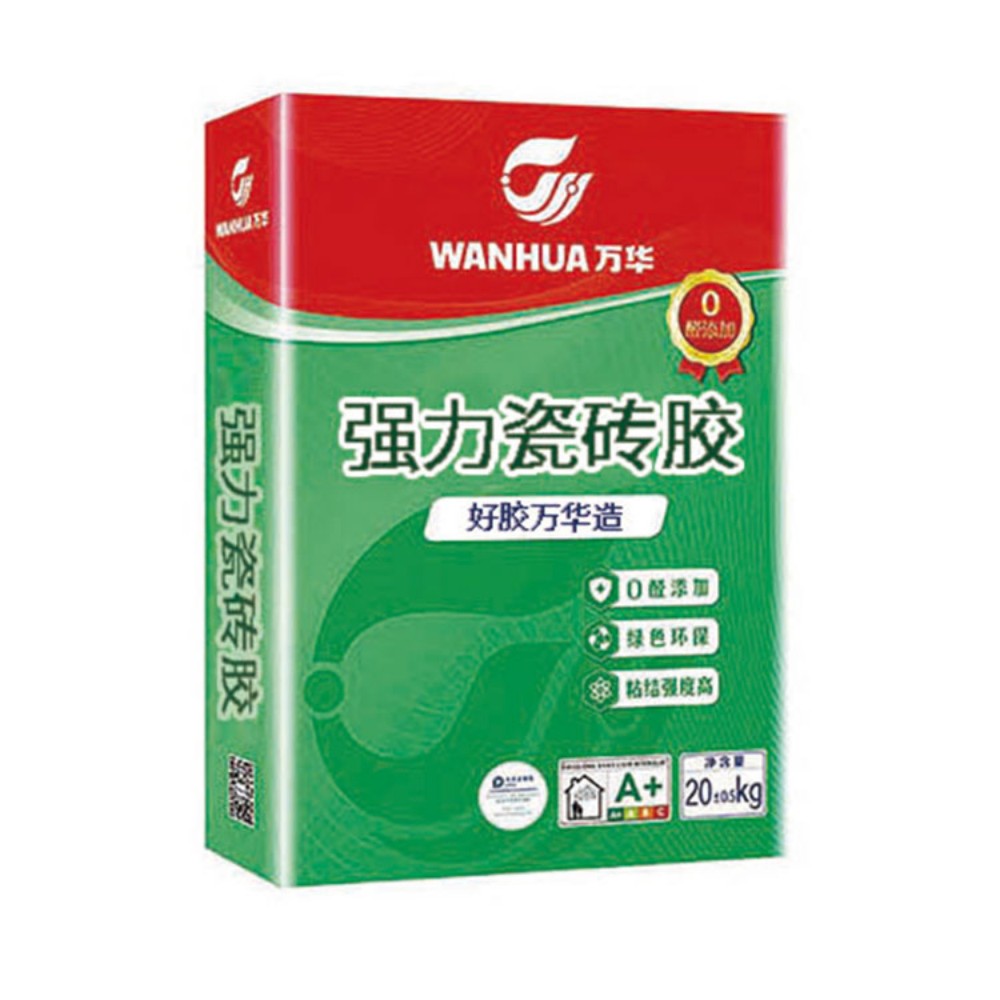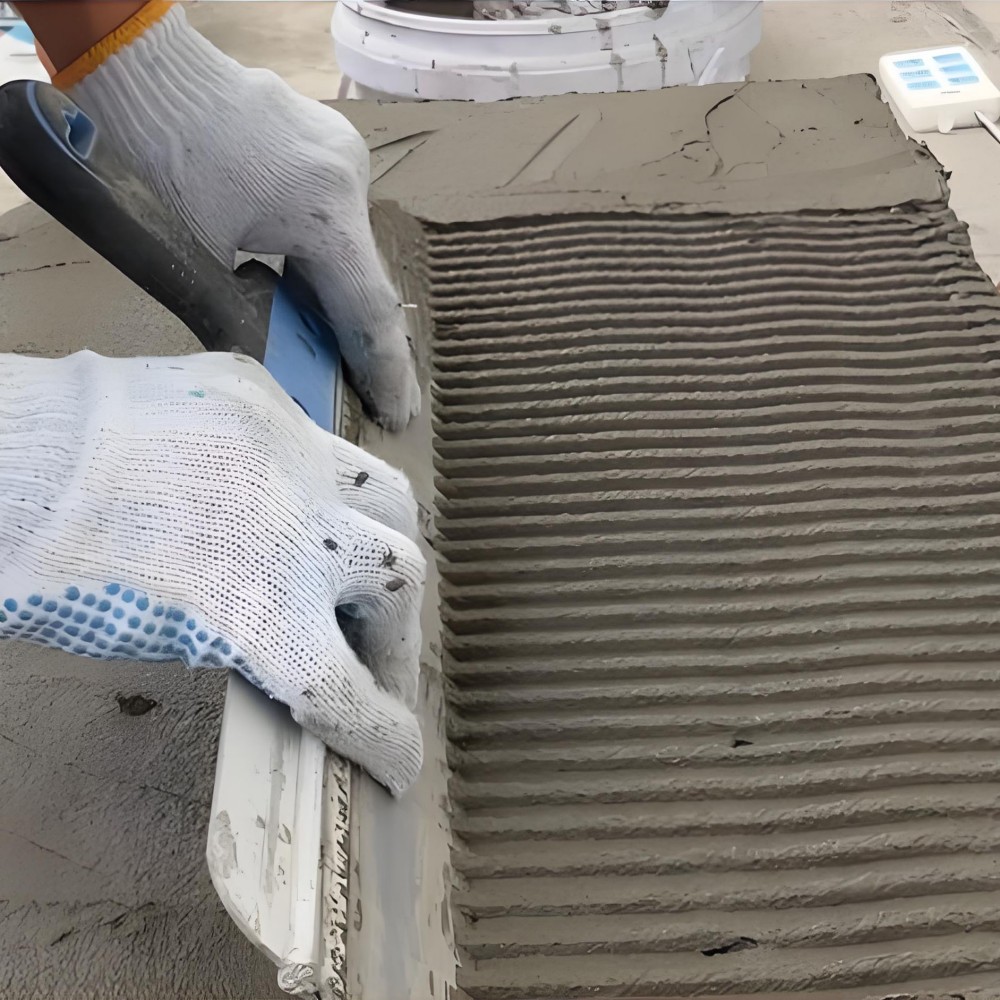

During the decoration process, many people confuse ceramic tile sealant with tile adhesive, thinking they are the same product, but this is not the case. In terms of product properties, ceramic tile sealant is a two-component epoxy resin material, mainly used for filling, beautifying and sealing the gaps of ceramic tiles. It can improve the overall aesthetics of tile paving and prevent the gaps from getting dirty. Tile adhesive, on the other hand, is mostly a cement-based material, whose core function is to stick tiles and ensure that tiles can be firmly attached to the base layer of the wall or floor. The two products are essentially different in purpose, composition and performance.
In the construction process of ceramic tile sealant, two major problems are often encountered: one is that the ceramic tile sealant does not dry or dries slowly, and the other is that the ceramic tile sealant changes color. These problems not only affect the construction progress, but also may reduce the decoration quality, so we need to analyze the causes and take targeted measures.
Causes and Solutions for Ceramic Tile Sealant Not Drying or Drying Slowly
The main reasons for ceramic tile sealant not drying or drying slowly are improper storage and uneven mixing. The specific situations are as follows:
Impact and Handling of Improper Storage
Ceramic tile sealant has strict requirements on the storage environment, and improper storage conditions will directly affect its drying performance. Among them, high temperature is a common "culprit" - high temperature environment will shorten the storage period of ceramic tile sealant and reduce the activity of the curing agent. In this case, the drying speed of the ceramic tile sealant will be significantly slowed down, but it is not irreversible. If it is found that the drying is slow due to high temperature, the ceramic tile sealant can be placed in a cool and ventilated place to extend the drying time. Usually, after placing it for 3-5 more days, the ceramic tile sealant can dry normally, and the performance such as hardness and adhesion after drying is not significantly affected, and it can still be used continuously.
In addition to high temperature, low temperature and humid environments will also have adverse effects on the storage of ceramic tile sealant. Low temperature will make the colloid of the ceramic tile sealant thicker, which not only affects the smoothness of glue discharge in the later stage, but also may make it difficult to mix evenly. The humid environment will cause the curing agent in the ceramic tile sealant to react with water vapor in advance, resulting in local curing of the colloid before construction, and uneven drying or non-drying is likely to occur after construction. Therefore, ceramic tile sealant should be stored in a dry and cool environment with a temperature of 10-25℃ and a relative humidity of less than 60%, and should avoid direct sunlight. It should be sealed in packaging during storage to prevent water vapor from entering.
Impact and Prevention of Uneven Mixing
The mixing quality of ceramic tile sealant directly determines its drying effect. The 4 key steps for mixing ceramic tile sealant have been introduced in the previous construction courses. If any of these steps is not done well, it may lead to uneven mixing, which in turn causes problems such as slow drying or non-drying. The specific implementation points and precautions of these 4 steps are as follows:
- Choose a good glue gun: A special glue gun suitable for two-component ceramic tile sealant should be used to ensure that the pressure of the glue gun is uniform and stable. Inferior or incompatible glue guns may cause uneven pressure on the rubber hose, resulting in unbalanced glue output and affecting the mixing ratio.
- Ensure simultaneous glue discharge: After installing the ceramic tile sealant, it is necessary to test the glue discharge state first, and observe whether the glue output of the two rubber hoses is consistent to avoid the situation where one is fast and the other is slow. If the glue discharge is uneven, the component ratio of the mixed ceramic tile sealant will deviate from the standard, resulting in insufficient reaction between the curing agent and the colloid.
- Discard the front section of the colloid: When the ceramic tile sealant starts to discharge, the mixing ratio of the front 10-15 cm of the colloid often does not meet the requirements and needs to be discarded directly. If this part of the colloid is used in construction, abnormal drying will occur due to insufficient mixing.
- Install an independent glue nozzle: An independent glue nozzle with an appropriate caliber should be selected according to the width of the tile gap. During installation, ensure that the glue nozzle is firmly connected to the rubber hose without looseness or glue leakage. Glue leakage will cause the loss of colloid components during glue discharge and destroy the mixing ratio.
Common Cases of Ceramic Tile Sealant Discoloration and Solutions
Discoloration of ceramic tile sealant is a common problem after construction, mainly manifested in three situations: whitening, blackening and yellowing. The causes and solutions for different discoloration phenomena are different:
Whitening of Ceramic Tile Sealant
The typical manifestation of ceramic tile sealant whitening is that the surface of the rubber strip is white, while the internal color is normal, which is more obvious in areas with high humidity such as near windowsills and bathrooms. From the perspective of causes, "moisture" is the core influencing factor - ceramic tile sealant, as an epoxy resin material, is extremely sensitive to moisture. If it comes into contact with moisture or water vapor before drying, a chemical reaction will occur on the surface of the colloid, leading to whitening.
To avoid the problem of whitening, two preparations need to be made before construction: first, after the tile paving is completed, it is necessary to place it for more than 7 days before carrying out the joint sealing construction, so that the moisture in the tile base layer, walls and floor can fully evaporate; second, if the tiles are mopped with water before construction, it is necessary to wait for 3-4 days to ensure that the tile gaps and the base layer are completely dry. After the construction is completed, it is also necessary to pay attention to the weather conditions. If it rains, the windows should be closed in time to prevent outdoor water vapor from entering the room and contacting the undried ceramic tile sealant. If slight whitening occurs, after the ceramic tile sealant is completely dry, you can dip a dry cloth in a small amount of alcohol and gently wipe the surface; if the whitening is serious, the whitened colloid needs to be removed and re-constructed.
Blackening of Ceramic Tile Sealant
Blackening of ceramic tile sealant mostly occurs in areas such as kitchens and bathrooms that are prone to oil stains or dust. There are two main causes: one is that the tile gaps and the base layer are not cleaned before construction, and the residual dust and oil stains combine with the ceramic tile sealant, causing the colloid to turn black; the other is that during later use, oil stains penetrate into the colloid or mold grows around the gaps.
To solve this problem, the base layer must be thoroughly cleaned before construction: first, use a brush to remove the dust in the tile gaps, then wipe the tile surface with a dry cloth. If there is oil stain in the gaps, you can dip alcohol and wipe repeatedly to ensure that there is no impurity on the base layer. During later use, the surface of the ceramic tile sealant should be cleaned regularly to avoid long-term accumulation of oil stains. If local blackening occurs and does not penetrate into the interior, a special joint sealant cleaner can be used for wiping; if the blackening is serious or mold grows, the blackened colloid needs to be removed, and the base layer should be cleaned before refilling the glue.
Yellowing of Ceramic Tile Sealant
Yellowing of ceramic tile sealant is common in light-colored ceramic tile sealant, and mostly occurs in areas such as near windows and balconies that are exposed to ultraviolet rays for a long time. The main reason is that ultraviolet rays will accelerate the aging of the ceramic tile sealant, destroy the molecular structure inside the colloid, and cause the color to turn yellow gradually, affecting the overall appearance.
To prevent yellowing, if ceramic tile sealant is used in areas with strong ultraviolet rays such as outdoors or near windows, special products with anti-ultraviolet function should be selected; after construction, a layer of special maintenance wax can be applied to the surface of the ceramic tile sealant regularly to form a protective barrier and reduce the direct irradiation of ultraviolet rays on the colloid. If slight yellowing has occurred, a joint sealant brightener can be used for wiping; if the yellowing is serious, the colloid needs to be replaced.
The above is a detailed introduction to the differences between ceramic tile sealant and tile adhesive, as well as the construction problems of ceramic tile sealant. It is hoped that it can provide practical reference for decoration construction. For more knowledge about decoration materials and construction skills, you are welcome to pay more attention to our website!

